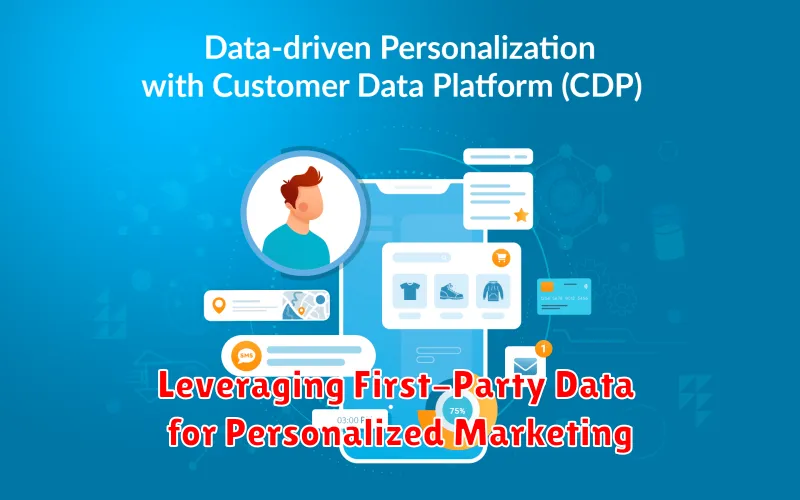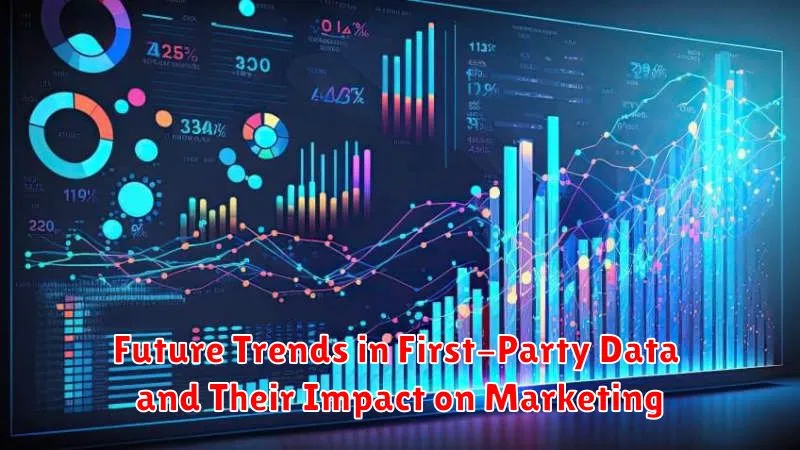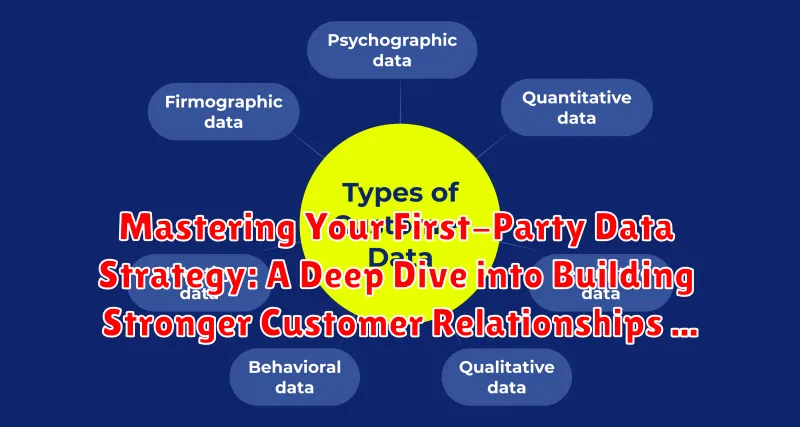In today’s data-driven business landscape, establishing a robust first-party data strategy is no longer a competitive advantage, but a necessity for sustained growth and meaningful customer relationships. This article provides a comprehensive exploration of how to effectively leverage your own customer data to gain deeper insights, personalize experiences, and ultimately, drive business success. We’ll delve into the intricacies of collecting, managing, and activating your first-party data to unlock its full potential, regardless of your industry or geographic location. Mastering this essential skill empowers you to move beyond generic marketing approaches and forge authentic connections with your audience, leading to increased loyalty and profitability.
This deep dive into building stronger customer relationships through a strategic focus on first-party data will equip you with the knowledge and tools needed to navigate the evolving digital landscape. We’ll examine the benefits of owning your data, including improved targeting accuracy, enhanced privacy compliance, and reduced reliance on third-party sources. From understanding the different types of first-party data to implementing effective segmentation techniques and measuring the impact of your initiatives, this guide offers practical insights and actionable strategies for building a first-party data strategy that aligns with your business goals and fosters lasting connections with your customers worldwide.
What is First-Party Data and Why is it Important?
First-party data is the information you collect directly from your audience or customers. This data is gathered through your own sources, such as your website, apps, CRM system, surveys, and direct interactions.
Examples include:
- Website activity (pages visited, time spent)
- Purchase history
- Email engagement (opens, clicks)
- Customer support interactions
- Demographic data provided directly by the customer
Why is it important? First-party data is invaluable because it provides direct insights into your customers’ behaviors, preferences, and needs. This leads to:
- Improved Customer Relationships: Personalized and relevant experiences.
- Enhanced Marketing Effectiveness: Targeted campaigns with higher ROI.
- Better Decision-Making: Data-driven strategies based on reliable information.
- Greater Control and Transparency: You own the data and understand its source.
- Increased Customer Trust: Demonstrates respect for customer privacy.
In an increasingly privacy-conscious world, first-party data is a crucial asset for building strong and sustainable customer relationships.
Understanding the Value of First-Party Data in a Privacy-First World
In an era increasingly defined by stringent data privacy regulations like GDPR and CCPA, first-party data has emerged as a cornerstone of ethical and effective marketing. This data, which you collect directly from your audience, offers a trusted and reliable source of insights.
Here’s why it’s so valuable:
- Trust and Transparency: Consumers are more likely to trust brands that are transparent about their data collection practices and give them control over their information. First-party data collection allows for this direct relationship.
- Accuracy and Relevance: Because you collect the data directly, you can ensure its accuracy and relevance to your specific business goals.
- Competitive Advantage: In a world where third-party cookies are becoming obsolete, first-party data provides a sustainable competitive advantage by enabling personalized experiences and targeted marketing campaigns.
- Compliance: Using data collected with consent is key to complying with data privacy regulations. First-party data strategies put the customer in control, simplifying this.
By prioritizing first-party data, organizations can build stronger customer relationships, enhance brand loyalty, and drive sustainable growth in a privacy-conscious environment.
Key Components of a Successful First-Party Data Strategy
A successful first-party data strategy hinges on several key components. These elements work together to ensure data collection, management, and utilization are effective and aligned with business goals.
Data Collection Infrastructure
Establishing a robust infrastructure is paramount. This includes implementing various data capture points across your digital touchpoints such as websites, apps, and email campaigns. Ensure proper tagging and tracking mechanisms are in place.
Data Management Platform (DMP) or Customer Data Platform (CDP)
A DMP or, preferably, a CDP is essential for centralizing, organizing, and activating your first-party data. This platform should enable data segmentation, profile unification, and integration with marketing automation tools.
Data Governance and Compliance Framework
Adhering to data privacy regulations like GDPR and CCPA is critical. Implement clear data governance policies, consent management processes, and data security protocols.
Analytics and Reporting Capabilities
Investing in robust analytics tools allows you to extract actionable insights from your first-party data. Track key performance indicators (KPIs) to measure the effectiveness of your marketing efforts and optimize your strategy.
Methods for Collecting First-Party Data: A Comprehensive Overview
Collecting first-party data effectively is crucial for building robust customer relationships. Several methods can be employed, each with its advantages and considerations.
Website Interactions
Website tracking, using cookies and analytics tools, provides insights into user behavior, such as pages visited, time spent, and actions taken. Form submissions, like newsletter sign-ups and contact forms, directly gather user-provided information.
Mobile App Usage
Mobile apps offer opportunities to collect data through in-app surveys, usage tracking, and permission-based data access (e.g., location, contacts). Ensure transparency and obtain explicit consent for data collection.
Customer Relationship Management (CRM) Systems
CRM systems are invaluable for centralizing customer data collected through various touchpoints. Data from sales interactions, customer service logs, and marketing campaigns can be consolidated for a holistic view.
Social Media Engagement
Social media platforms provide data through profile information, engagement metrics (likes, shares, comments), and direct interactions with your brand. Be mindful of platform privacy policies and user expectations.
Transactional Data
Purchase history, subscription information, and loyalty program data offer valuable insights into customer preferences and behaviors. Analyzing this data can inform targeted marketing and personalized experiences.
How to Organize and Manage Your First-Party Data Effectively
Effective organization and management of first-party data are crucial for deriving meaningful insights and maximizing its value. This process involves several key steps, including data consolidation, standardization, and implementing robust data governance policies.
Data Consolidation and Centralization
Begin by consolidating data from various sources, such as your website, CRM, email marketing platform, and mobile app, into a central repository. This could be a data warehouse, a data lake, or a dedicated customer data platform (CDP). Centralization ensures a single, unified view of each customer.
Data Standardization and Cleansing
Implement data standardization protocols to ensure consistency across all data points. This includes defining standard formats for names, addresses, and other key attributes. Furthermore, regularly cleanse your data to remove duplicates, correct errors, and ensure accuracy. Data quality is paramount.
Implementing Data Governance
Establish clear data governance policies to define roles and responsibilities, data access controls, and data retention policies. These policies should align with relevant data privacy regulations (e.g., GDPR, CCPA) and industry best practices. Consistent data governance is key to building trust and ensuring compliance.
Best Practices for Using First-Party Data to Enhance Customer Experience
First-party data offers unparalleled opportunities to personalize and enhance customer interactions. To effectively leverage this data, consider these best practices:
Personalization at Scale
Utilize first-party data to tailor experiences based on individual customer preferences and behaviors. This includes personalized website content, product recommendations, and email marketing campaigns.
Improving Customer Service
Empower customer service representatives with access to first-party data to provide more efficient and relevant support. This allows for quicker resolution times and a more satisfying customer experience.
Creating Targeted Content
Develop content that addresses specific customer needs and interests based on insights derived from first-party data. This ensures that your content resonates with your audience and drives engagement.
Optimizing the Customer Journey
Analyze first-party data to identify pain points and areas for improvement in the customer journey. By addressing these issues, you can create a smoother and more enjoyable experience for your customers.
Leveraging First-Party Data for Personalized Marketing

Personalized marketing is no longer a luxury; it’s an expectation. First-party data provides the bedrock for creating highly relevant and engaging customer experiences. By understanding your customers’ preferences, behaviors, and purchase history, you can tailor your marketing messages to resonate with them on a personal level.
Benefits of Personalized Marketing with First-Party Data
- Increased Engagement: Personalized content is more likely to capture attention and drive interaction.
- Improved Conversion Rates: Tailored offers and recommendations can lead to higher conversion rates.
- Enhanced Customer Loyalty: Demonstrating that you understand your customers’ needs fosters stronger loyalty.
Examples of Personalized Marketing Strategies
- Personalized Email Campaigns: Segment your email list based on first-party data and send targeted messages.
- Dynamic Website Content: Customize website content based on user behavior and preferences.
- Product Recommendations: Offer personalized product recommendations based on past purchases and browsing history.
The Importance of Data Governance and Compliance in First-Party Data Strategy
In the realm of first-party data strategies, data governance and compliance are paramount. They ensure ethical and responsible data handling, safeguarding customer trust and mitigating legal risks.
Data Governance: Establishing a Framework
Data governance involves establishing policies, procedures, and standards for data collection, storage, usage, and security. This includes:
- Data Quality: Ensuring data accuracy, completeness, and consistency.
- Data Security: Implementing measures to protect data from unauthorized access and breaches.
- Access Control: Defining who has access to what data and under what circumstances.
Compliance: Adhering to Regulations
Compliance refers to adhering to relevant data privacy regulations, such as GDPR, CCPA, and other applicable laws. This entails:
- Obtaining Consent: Gaining explicit consent from customers before collecting and using their data.
- Data Minimization: Collecting only the data that is necessary for a specific purpose.
- Transparency: Clearly communicating data practices to customers and providing them with control over their data.
Failing to prioritize data governance and compliance can result in severe consequences, including hefty fines, reputational damage, and loss of customer trust. Therefore, integrating these principles into your first-party data strategy is not merely an option but a necessity.
Measuring the ROI of Your First-Party Data Initiatives
Assessing the Return on Investment (ROI) of first-party data initiatives is crucial for demonstrating the value of data-driven strategies and securing continued investment. Establishing clear metrics and tracking performance meticulously are essential steps.
Key Metrics to Track
Several key performance indicators (KPIs) can be used to evaluate the effectiveness of your first-party data strategy. These include:
- Customer Lifetime Value (CLTV): Track how first-party data impacts long-term customer value.
- Conversion Rates: Monitor improvements in conversion rates across different marketing channels.
- Customer Acquisition Cost (CAC): Analyze how first-party data reduces the cost of acquiring new customers.
- Customer Retention Rate: Measure the impact of personalized experiences on customer loyalty.
- Website Engagement: Observe changes in metrics like bounce rate, time on site, and pages per session.
Attribution Modeling
Employing appropriate attribution models helps in understanding the influence of first-party data on customer behavior and conversions. Compare performance across different segments and marketing campaigns to identify areas for optimization.
Future Trends in First-Party Data and Their Impact on Marketing

The landscape of first-party data is continuously evolving, driven by technological advancements and shifting consumer expectations. Staying ahead of these trends is crucial for maintaining a competitive edge in marketing.
Emerging Technologies and First-Party Data
Artificial intelligence (AI) and machine learning (ML) are poised to play an increasingly significant role in analyzing and activating first-party data. These technologies can unlock deeper insights into customer behavior, predict future needs, and automate personalized experiences.
The Rise of Data Clean Rooms
Data clean rooms are secure environments where multiple parties can share and analyze aggregated, anonymized data. This enables marketers to collaborate with partners while adhering to strict privacy regulations and enhancing their first-party data insights.
Enhanced Personalization and Privacy
Consumers are demanding more personalized experiences, but also greater control over their data. Future marketing strategies will need to prioritize privacy-enhancing technologies (PETs) and transparent data practices to build trust and maintain customer loyalty. Expect a shift towards consent-based data collection and value exchanges for sharing personal information.
The Continued Importance of Data Integration
Successfully navigating the future of first-party data requires seamless integration across all marketing channels. This means breaking down data silos and creating a unified view of the customer to deliver consistent and relevant experiences.

